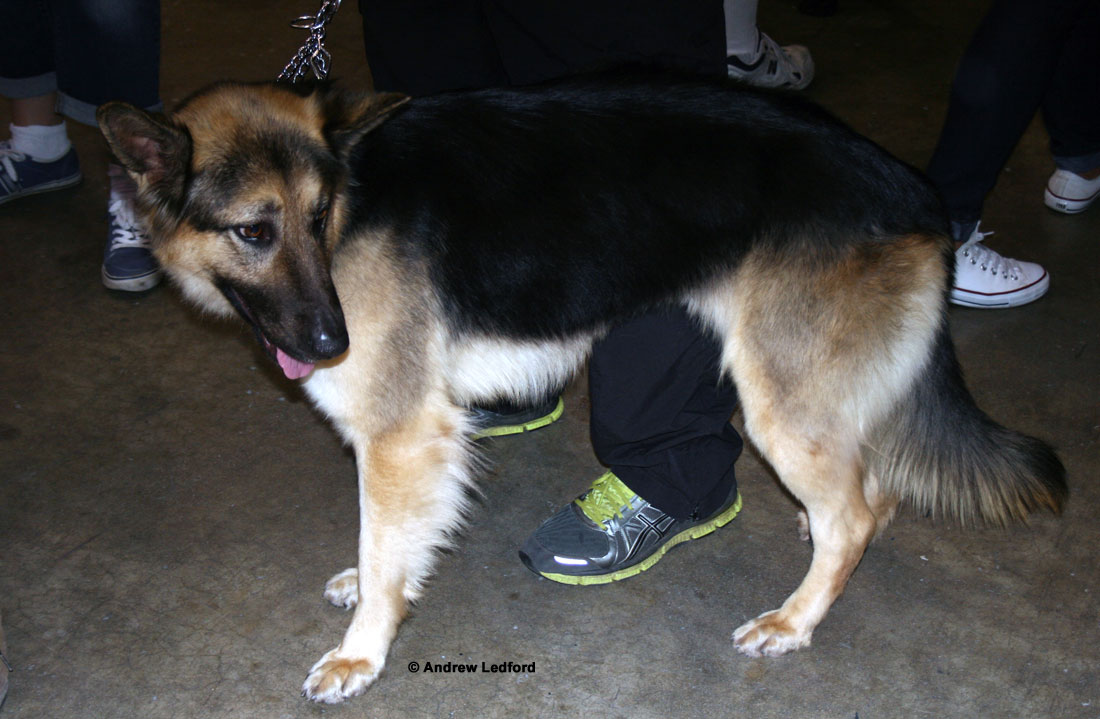Adopting a Rescue Dog or New Puppy and New Dog Syndrome
Adopting a Rescue Dog or New Puppy and New Dog Syndrome
Are you adopting a rescue dog or new puppy? Perhaps you now have a new dog or puppy, and you want to prevent problems or work through problem behavior before they become entrenched behavior patterns? I do all breed dog training and have extensive experience training rescue dogs. My service area is all of Orange County, Long Beach including all the 562 area code, and the San Gabriel Valley areas. Call for information about my puppy, adult dog, and rescue dog training programs
714-827-4058
Adopting a New Dog or Puppy
This article was started as advice about adopting a new rescue dog and the transition period of moving a new dog into a new home. Originally it was going to be part of a rescue dog training series. It’s still focused on rescue dogs, but the information about new dog syndrome can apply to any new dog, purebred or mix.
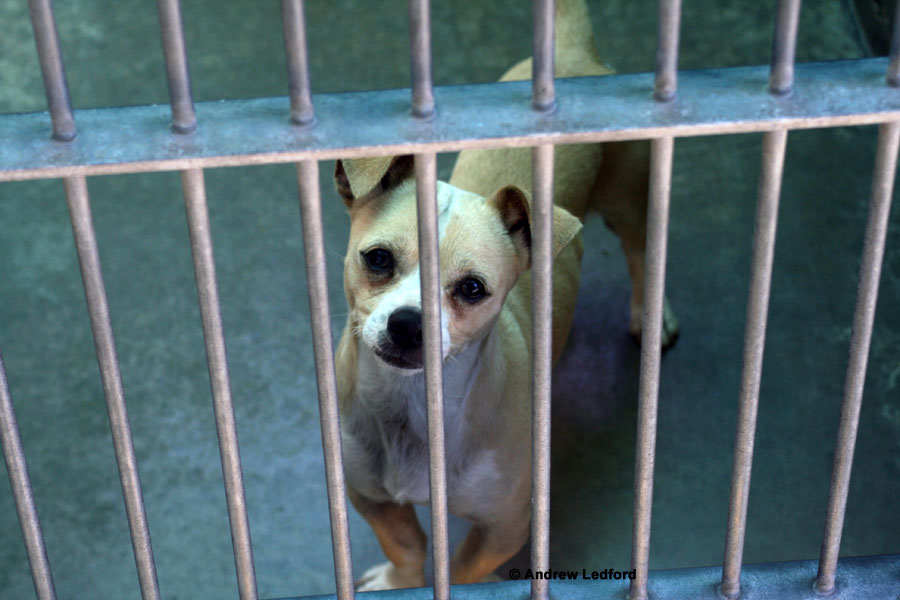
Training your new dog starts as soon as you get it home. Training your rescue dog or purebred will go smoother if you understand some problems dogs face when transitioning into a new home. This transition period lasts until the dog adjusts and settles in. With many new dogs a change in behavior can be seen during the transition period and it’s especially noticeable in many rescue dogs.
Rescue Dog Training
It’s common for a new dog to go from very good to bad behavior during the rehoming transition period. Why do rescue dogs have higher rates of behavior change when transitioning into a new home? The change in behavior during the transition period is usually seen in sensitive dog with a low stress threshold. Another reason is that most rescue dogs have been through the dog pound system. If the dog had a less than ideal upbringing, institutionalization may only compound the problems. When an impoverished puppyhood is combined with the dog pound experience we often get dogs under a huge amount of stress.

The good news is, dogs are resilient and quite adaptable. Many disadvantaged dogs can learn to live a normal happy life through proper behavioral management and training.
People don’t realize it’s during this important transition period when some of the most important training takes place. When the environment is unstructured a new dog under stress will often learn undesirable responses. When an animal is under a lot of stress, learned avoidance responses can easily become well established behavior patterns. These behaviors are rewarding in that they provide in the animal’s mind some degree of safety and security. Abraham Maslow put safety and security as the second most important need, right after physiological needs such as food and water.
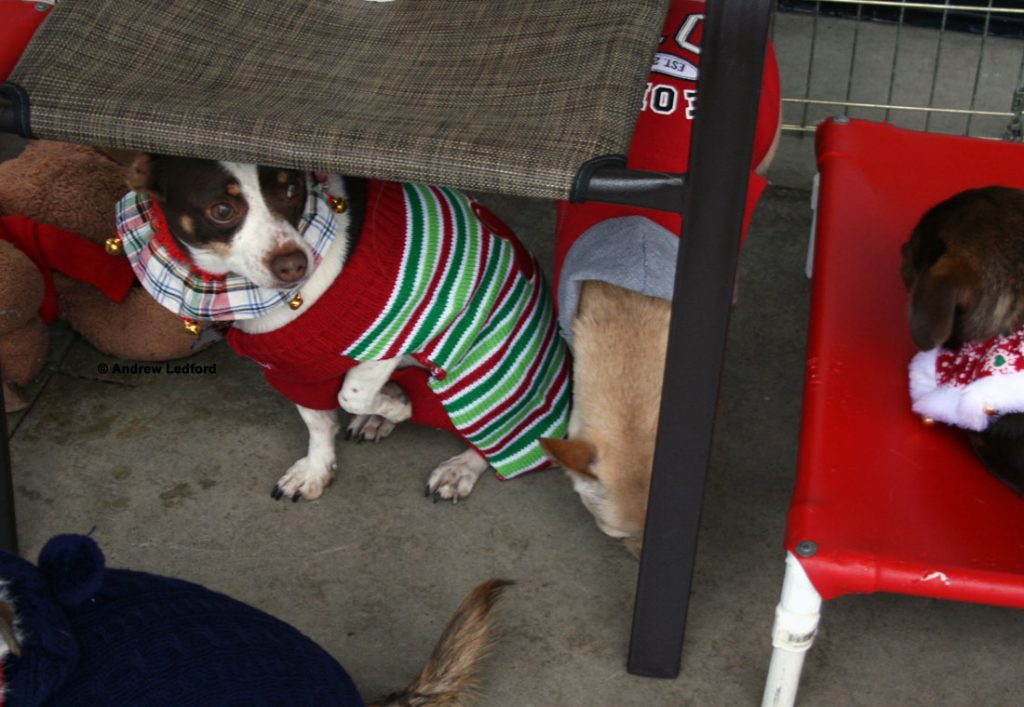
Sensitive Dog It May Have More Problems Transitioning Into A New Home When Adopting a Dog A Sensitive Rescue Dog With A Low Stress Threshold There’s A Higher Chance Of Behavior Change Throughout The Transition Period During Rehoming.
The process of teaching your new dog how to respond properly when under stress starts with arranging the environment to encourage good behavior. Next we need to create some kind of predictable routine. This does not need to be the same thing at the same time on a day in and day out basis. But there should be some kind of predictability with the environment and especially with the people in the house. We often create this predictability through training.
Stress in a Dog’s New Home.
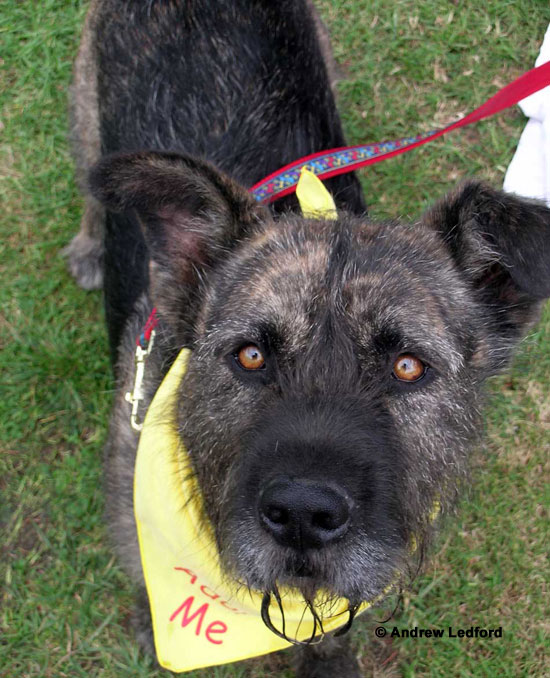
Unknown humans are one of the biggest variables for dogs entering a new home environment. Resident pets can also influence the level of felt stress. Rescue dogs need to interact within a new social environment and the only point of reference for this is their past experience. While many dogs from quality breeders have a known history, most rescue dogs come with an unknown past. It’s not just social interactions that contribute to the dog’s stress. All new and unknown changes can add to the buildup of stress.
When stressed, many animals react with fear and uncertainty. Fear is often seen as avoidance behavior. Avoidance behavior can also be thought of as distance increasing behavior. The dog wants to create a distance of safety between it and a perceived threat. Distance increasing behavior can be both moving away from a threat and keeping others away with threatening behavior. What determines if a dog will bite is the degree to which they have an active or passive defense response. There is a threshold each dog has for when it will bite.
All kinds of problems can show up when a dog is brought into a new home. Aggressive biting may be one of the more extreme behaviors we see in rescues dogs, but it’s not the most widespread. Rescue dogs tend to have the same problems that plague the general dog population. After settling in, it’s far more common to see barking, chewing, and potty training problems.
New Dog Syndrome
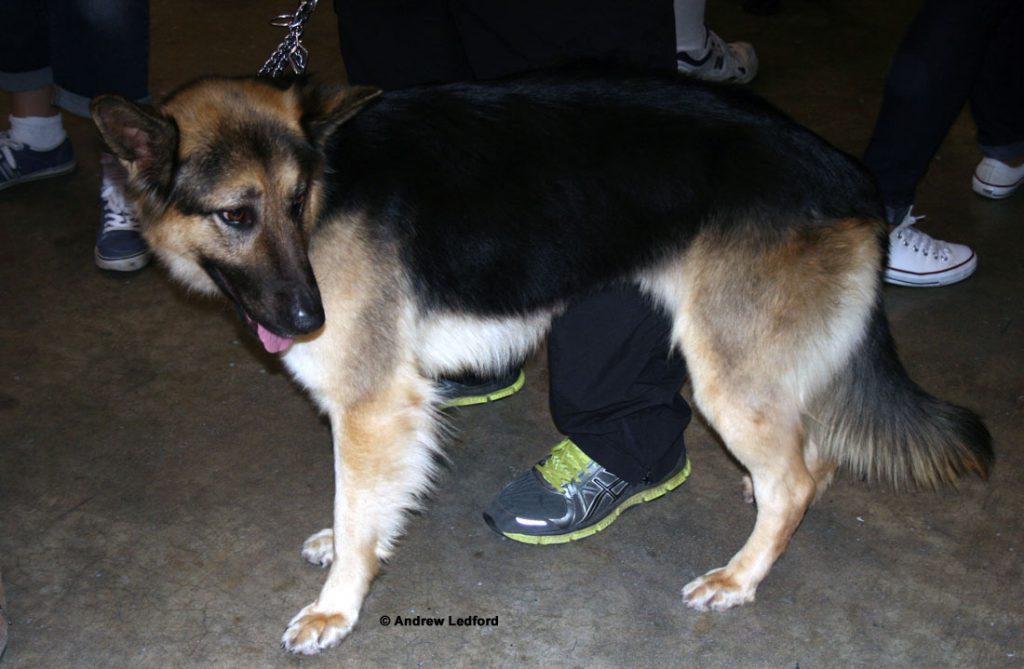
Over the years I‘ve observed that dogs often behave quite well when first brought into a new home, only to become unmanageable once they settle in. I think of this as new dog syndrome. Generally, dogs displaying this pattern have a fairly low stress threshold. New dog syndrome is caused when the dog’s behavior is suppressed by the initial stress of the new environment. The behavior of a stressed dog is depressed to the point of reacting or behaving very little. Once the dog is comfortable in its new home you see the problem behavior explode.
Usually what’s noticed within the first few days is that a new dog’s behavior vacillates between approach and avoidance. Some examples of avoidance show up as not wanting to be picked up, not coming to the owners, or not going through doors. Another problem associated with avoidance is not wanting to use the potty area. This can be a tricky one to deal with. You don’t want to let this become a behavior pattern, yet you don’t want to stress the dog with punishment. As the dog becomes accustomed to its new environment most dogs get more confident. As the dog becomes more confident the approach responses increase.
This board and train Boxer dog took longer to transition into my home than most dogs and requires special handling during the transition period. I had to use my (at that time, now my ex) girlfriend’s special homemade sausage to help get the dog settled into the daily rhythms of life in a new home.
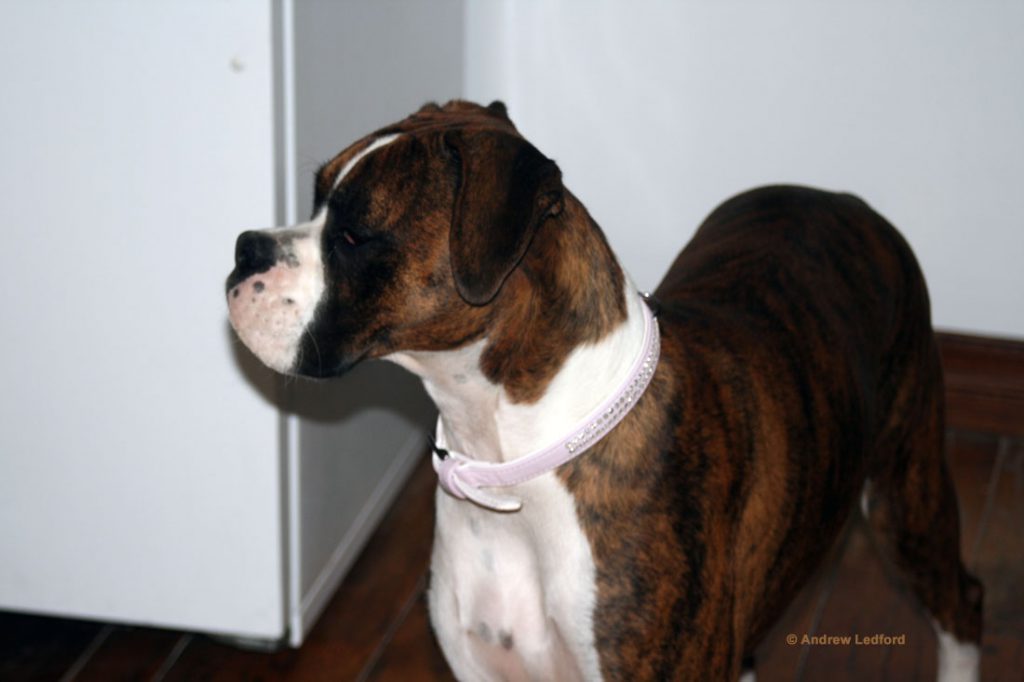
It usually takes from 3 to 14 days for a dog to begin feeling as though they’re part of the family. This bonding period is very important, especially if you’re adopting a dog or breed that is known for being aggressive. It may take several months before you really know your dog well enough to trust it and know what it will do.
When I did board and train programs it usually took between 3 and 7 days for a dog to settle into my home. It’s not uncommon for a new dog to be under some stress and not want to eat for a day or two. If a dog is not eating much for two days I put more effort into the early stages of training.
To facilitate quick adaptation to my home I spend one or two days focused on the new dog. I recommend bringing a new dog into the home when you can spend time getting the dog familiar with the new environment and the house rules. During this transitional period I suggest teaching house rules (behaviors you desire) with positive reinforcement if possible. In general, positive reinforcement training will put the dog under less stress than other methods.

There Is Also A Rehoming Transition Period When Adopting Both Rescue Dogs or A Purebred Puppy Or Dog.
Dog Training Helps Smooth Your Dog’s Transition Into Its New Home.
Training For a New Dog or Puppy
The first behaviors I usually start teaching a new dog are leash manners, crate training, and potty training. This set of behaviors helps build the dog’s confidence and gives me basic control. They also create a foundation for future bond building activities.
The next behaviors I work on are food reinforcement exercises to build the dog’s self-control. After these foundation behaviors are started we begin the formal obedience training.
When I used to work with police dogs we had the handlers just get to know the dog for the first couple of weeks. This practice can vary depending on the dogs and the program. I wanted to mention the police dogs to point out that even very confident dogs go through a transition period. Setting the environment up for a smooth transition is for all new dogs, not just sensitive dogs with low stress thresholds. But sensitive dogs do have different transition patterns.
Most pet dogs can develop a working relationship with a new handler almost immediately. While most dogs are quite accepting and tolerant, I still recommend pet owners take precautions with any new dog. Precautions are especially important for large dogs and dogs that have the potential for being aggressive.
Many new dog owners have no idea what a rescue dog has been through before they acquired it. If the dog is aggressive and has been punished there could be punishment induce aggression. In this case aggression may only be seen when a human does some behavior the dog interprets as threatening. There could also be issues of the dog guarding resources such as food or toys.
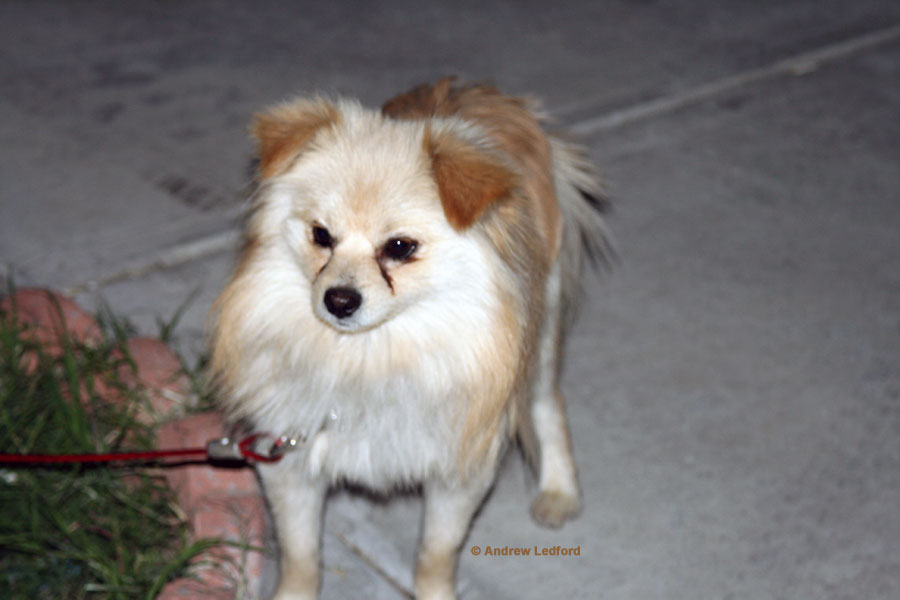
The Transition Period is a Time to Evaluate Your New Dog
It’s best to be a little cautious in the beginning. Have a plan in case there’s a problem. You don’t need to be afraid of a new dog, but you should be cautious. Think of the first several weeks as an evaluation period.
Having the dog wear a leash can be useful for controlling behavior and so can having another adult in the house to help if needed. If you have any concerns about your dog’s behavior I recommend consulting an experienced dog trainer. While general advice is a good way to get started, each dog and family is unique. Because of the unique nature of each family’s social makeup and each individual dog, serious behavior problems require individual help from a professional dog trainer.
If you are in North Orange County or Long Beach and 562 call me for information about my rescue dog training programs.
714-827-4058.

